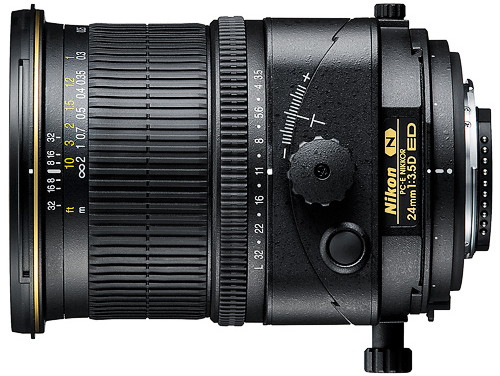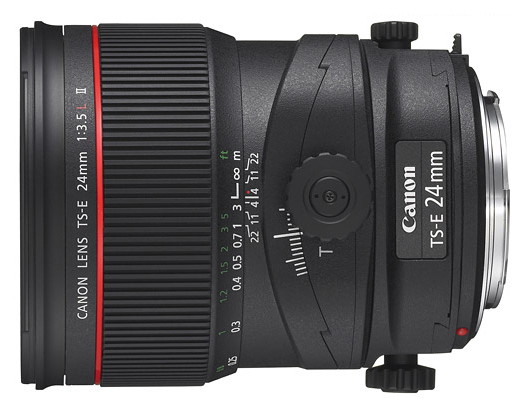Which lens? Choose the best lens for your DSLR
DSLR lenses explained: from fish-eye to telephoto

Tilt and shift lenses
Here's where things get that extra bit special. Shift camera lenses are used primarily to correct for converging vertical lines in architectural photography, while the provision to tilt adds full focal plane control. The two movements aren't mutually exclusive, although modern-day lenses, such as the Nikon 45mm f/2.8 PC-E and Canon EF 24mm f/3.5L TS-E, feature control over both.
Shift is the physical rise or fall of a lens from its standard position. Rather than tilting the camera upwards to shoot a tall building, for example, maintaining a parallel frame to the subject and shifting the lens upwards can be used to, as such, 'aim' the camera instead. This stops converging vertical lines by lowering the centre point's position to far lower in the frame.
Tilting a lens adjusts the way the focal plane sits to the sensor. While a normal lens sits parallel to the imaging sensor and, therefore, the focal plane runs directly across it, a lens with horizontal tilt has the capacity to move the focal plane through horizontal depth.
This can be used to make a wide-angle scene appear miniature - a current craze with various post-production software and smartphone apps - but is more useful for its proper use of front-to-back focus of a specific non-horizontal surface.
DSLR lenses usually lack both horizontal and vertical tilt control - something reserved for large format studio cameras where full three dimensional focal plane control can be obtained.
You need to know exactly what you're doing with these lenses to get full control, plus they're far from cheap - upwards of £1,000, if not closer to £2,000 a piece.
But the control you can obtain is far beyond that possible in post-production, and may be essential for studio or architectural professionals.
Get daily insight, inspiration and deals in your inbox
Sign up for breaking news, reviews, opinion, top tech deals, and more.
Typical tilt and shift lens examples
DSLR

Nikon Nikkor ED 45mm f/2.8 D PC-E Micro - £1,394

Canon TS-E 24mm f/3.5L II - £1,720
Older Sony Minolta 35mm f/2.8 shift lenses are available second hand - but very hard to find
Older '70s Pentax 28mm f/3.5 shift lenses are available second hand - but very hard to find)
MC ARAX 35mm f/2.8 tilt shift (Nikon F, Canon EF, Sony A, Pentax K, Olympus 4/3 and other fittings including Leica R)
----------------------------------------------------------------------------------------------------